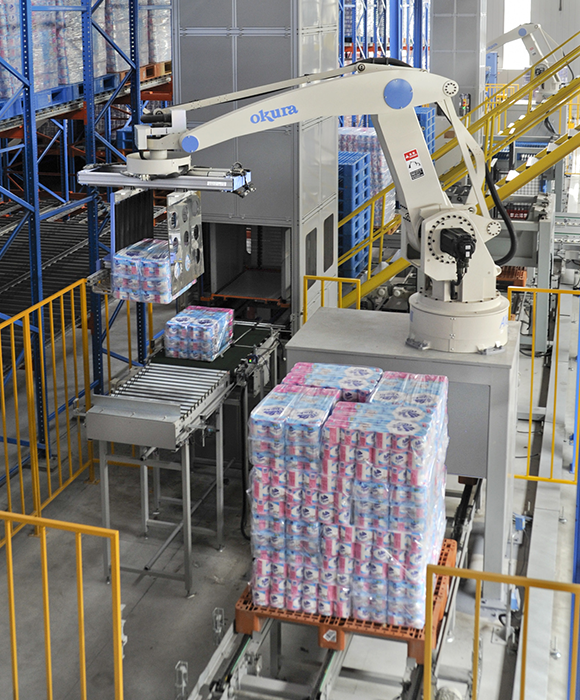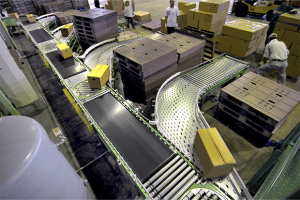Introduction
As industrial process automation examples become increasingly complex, companies are turning to automation to streamline processes and boost efficiency. One of the most impactful innovations in this space is the robotic pallet jack.
Unlike traditional manual pallet jacks, these smart machines combine automation, mobility, and intelligent navigation to transform how goods are moved within facilities. In this article, we explore what robotic pallet jacks are, how they function, and the key benefits they offer for logistics operations.

What Are Robotic Pallet Jacks?
Robotic pallet jacks, also known as autonomous pallet movers or automated pallet trucks, are self-operating vehicles designed to transport pallets and heavy loads without human intervention. These machines are equipped with sensors, cameras, and navigation software that allow them to move around warehouses safely and efficiently.
While they resemble traditional pallet jacks in form, robotic pallet jacks are capable of much more. They can be programmed to follow specific routes, pick up and drop off goods at designated locations, and even integrate with warehouse management systems (WMS) for seamless coordination.
How Do Robotic Pallet Jacks Work?
The core functionality of robotic pallet jacks revolves around autonomous navigation and intelligent control systems. Here are some of the key components:
- Sensors and Vision Systems: These help detect obstacles, measure distances, and map the environment in real time.
- Navigation Algorithms: Advanced software allows the robot to plan optimal routes, avoid collisions, and adjust paths dynamically.
- Motorised Drive Systems: High-performance motors ensure smooth movement and accurate load handling.
- Wireless Connectivity: Enables communication with other systems, such as the WMS, for real-time updates and task allocation.
Once deployed, these machines can operate continuously, handling repetitive material movement tasks without the need for human supervision.

Advantages of Using Robotic Pallet Jacks
- Increased Efficiency and Throughput
Robotic pallet jacks reduce the time required to move goods across a facility. By automating repetitive tasks, they help accelerate workflows and improve overall throughput. - Labour Optimisation
With robots handling transport tasks, human workers can focus on more complex and value-added responsibilities. This helps alleviate labour shortages and reduces dependence on manual labour. - Improved Safety
Equipped with collision detection and avoidance systems, robotic pallet jacks minimise the risk of workplace accidents. They operate predictably and follow predefined paths, reducing human error. - Scalability
As logistics demands grow, robotic pallet jack fleets can be expanded with ease. They can be redeployed or reprogrammed for new tasks without major changes to infrastructure. - Operational Cost Savings
Although the initial investment may be high, the long-term savings in labour, downtime, and maintenance often outweigh the costs. Automated systems can also operate 24/7, boosting productivity. - Data-Driven Decision Making
Robotic systems collect data on operations, which can be analysed to identify bottlenecks, optimise routes, and improve overall logistics performance.
Applications in the Logistics Industry
Robotic pallet jacks are being adopted across various sectors within logistics:
- Warehousing: For transporting goods between storage zones, docks, and packing areas.
- Distribution Centres: Assisting with cross-docking and order fulfilment processes.
- Retail and E-commerce: Supporting high-volume picking and replenishment tasks.
- Food & Beverage: Ensuring hygienic, hands-free handling of packaged goods.
Real-world examples include automated cold storage environments where robotic pallet jacks operate in temperatures unsuitable for humans, or high-throughput distribution centres that run around the clock.
Considerations When Adopting Robotic Pallet Jacks
Before integrating robotic pallet jacks, companies should consider the following:
- Warehouse Layout: Ensure that the environment is suitable for autonomous navigation, with clear pathways and designated loading zones.
- Integration with Existing Systems: Seamless connection with your WMS and other automation tools is essential for efficiency.
- Workforce Training: Employees should be trained to work alongside robotic systems and understand basic troubleshooting.
- Maintenance and Support: Regular servicing and technical support are necessary to ensure consistent performance.
Conclusion
Robotic pallet jacks are revolutionising logistics by automating the transport of heavy goods with precision, safety, and efficiency. By reducing reliance on manual labour and increasing operational agility, they offer a powerful solution to the challenges faced by modern logistics operations.
Whether you’re looking to improve warehouse throughput, enhance safety, or scale your operations, robotic pallet jacks offer a smart investment. Reach out to Okura Singapore today to explore how their industrial automation solutions can elevate your logistics performance.


